Message Not Received
Road casualty figures in East Birmingham are disproportionately high. Interventions that have been effective elsewhere in the city had achieved little impact. Birmingham City Council (BCC) initially thought that young men speeding in high performance cars, lay at the heart of the problem.
The Approach
When we interrogated collision data, alongside evidence from community interviews, we discovered that, whilst young men driving high performance cars were visible and annoying to residents, the actual number of casualties attributable to them was very small.
The reason this area had higher deaths and injuries was explained by a very large number of passenger casualties, which strongly suggested passengers were not wearing seatbelts. To test this hypothesis, So-Mo observed seatbelt use at three casualty hotspots. An observation of 507 vehicles uncovered a startling disparity:
Nationally, the rate of passenger non-use is 8% (DfT 2018), locally it was sitting at 38%, a staggering 5 times higher!
When we overlayed collision data with consumer and sociodemographic data, it transpired that 80% of these casualties were experienced by people of South Asian origin. Whilst this problem affected all ages, it was particularly pronounced amongst the 16-24 age group.
So, what had gone wrong?
Decades of high-profile, well regarded seatbelt campaigns supported by changes in the law, resulted in the UK having one of the highest wearing rates in the world. So, what had gone wrong?
A review of prior campaigns revealed two things:
- First, the primary device used in these campaigns to drive a behavioural shift was the use of emotion associated with loss of a loved one.
- Second, that the campaign actors were almost exclusively white families depicted as living in UK suburbs.
Heightened emotion aids engagement, memorability and recall of message – but only when the viewer is able to identify with the person they are seeing.
People are more likely to empathise and feel an emotional response when they identify with the campaign ‘actor’ and its content (Noar et al., 2007)
A failure to reflect the lives and aspirations of South Asian people had inadvertently resulted in ‘Message Not Received’. We’d uncovered a health-inequality that had remained hidden and unaddressed for years.
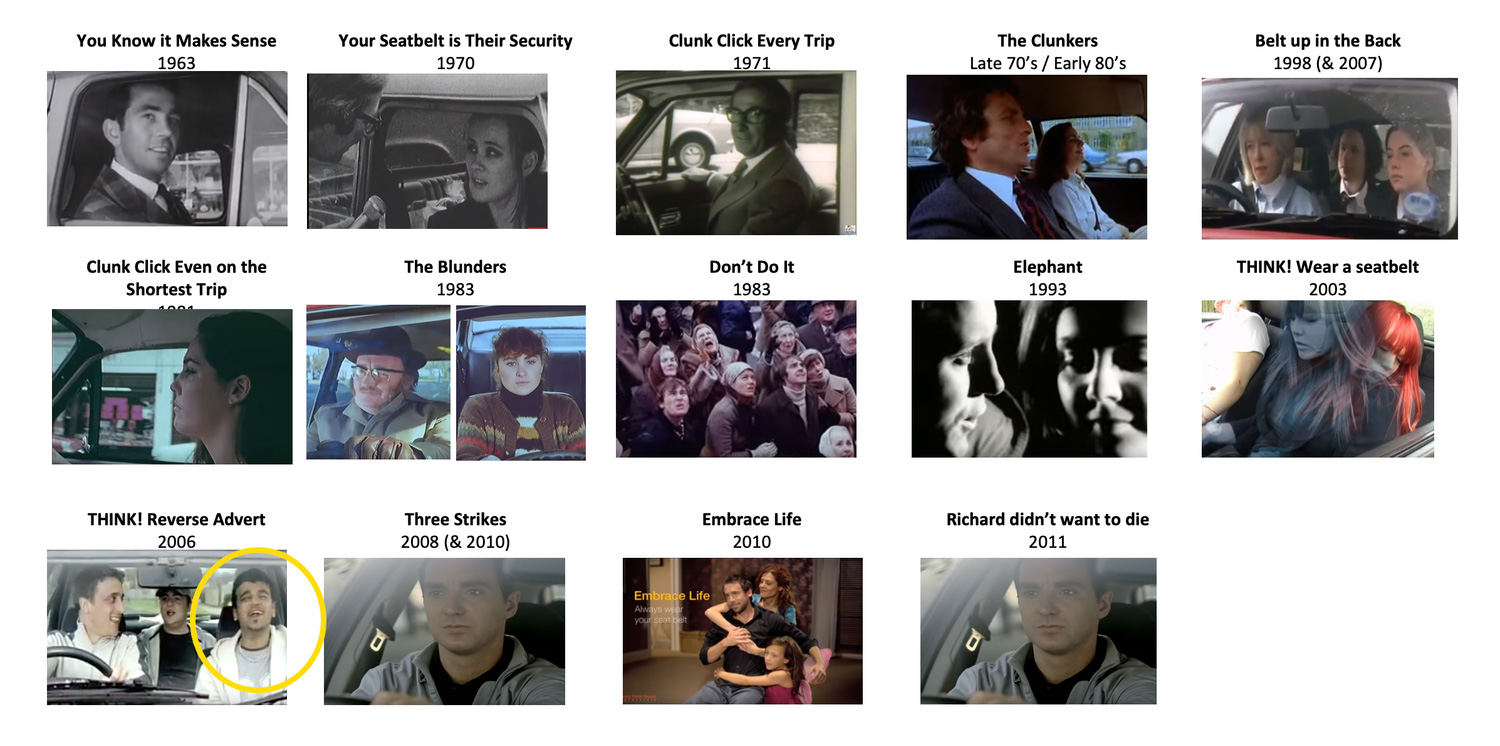
We decided to test this further. The logic we developed was this:
- If we could increase use of seatbelts, we would see a reduction in passenger casualties.
- We also hypothesised that any intervention to increase seatbelt use would need to be targeted and tailored to a South Asian population.
The Why
In early 2021, the UK was in lockdown. We devised an innovative way to engage 20 young people of Pakistani and Bangladeshi heritage, through the creation of an online community where we were able to use a process of digital ethnography.
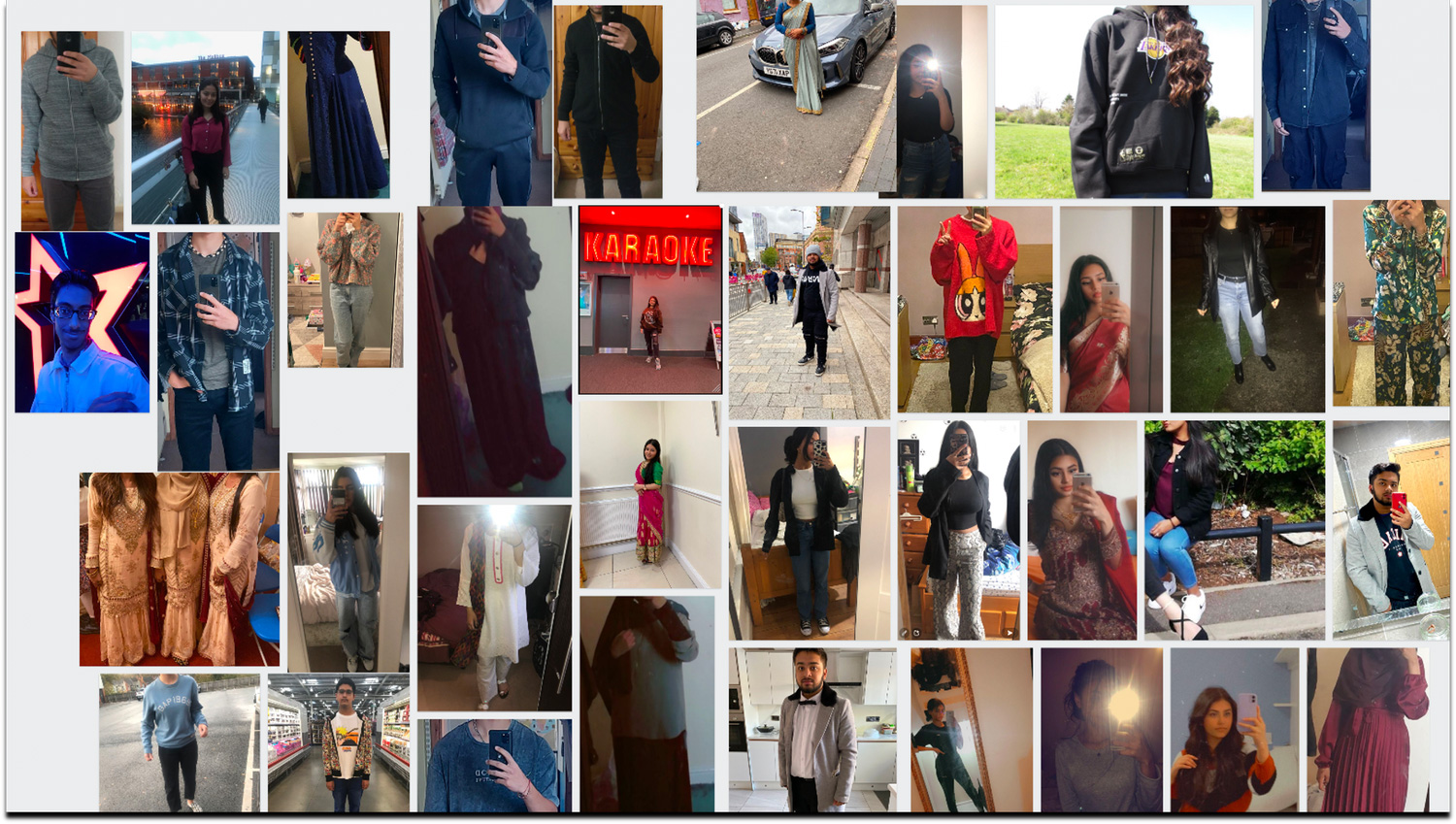
Over several weeks, 20 young people shared their lives, their hopes and their insights with us.
We gained the following insights from digital ethnography:
- Risk perceptions are a critical determinant of health behaviours.
- Seatbelts came very low down on an assessment of perceived risky behaviours. We surmised that any campaign that focused purely on a a narrative of death and injury was unlikely to be effective.
- However, we also uncovered a very powerful insight. All of our young people were highly susceptible to something known as ‘anticipated regret’. Anticipated regret is the feeling experienced right now, of the regret we may feel in the future, about decisions we are currently considering making.
Co-Design
So-Mo worked with the young people to explore and prototype many different scenarios exploring the concept of anticipated regret, such as the below examples.
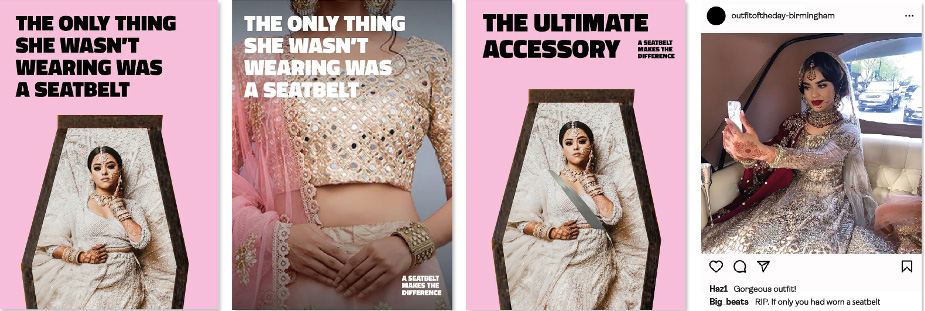
The co-design sessions and many prototypes led to the development of the final two tailored and co-designed campaigns. These two campaigns are shown below.
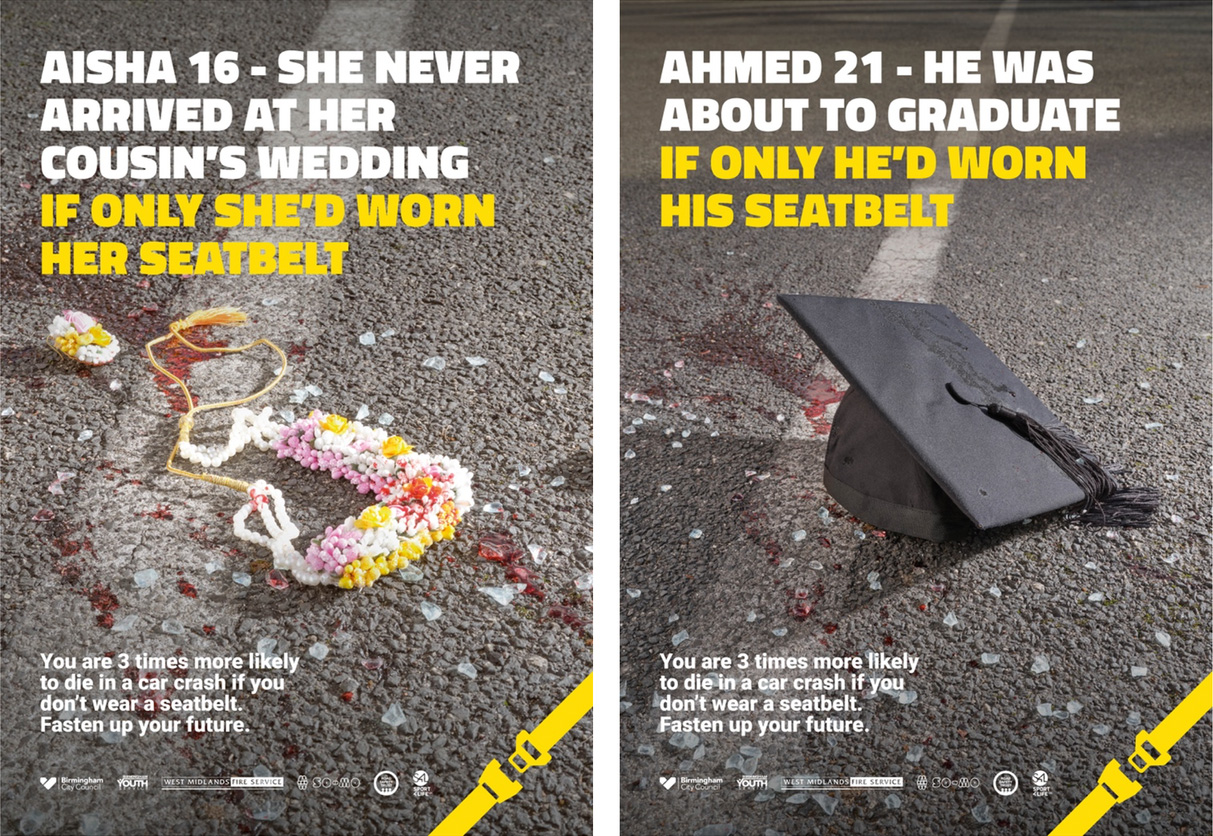
Efficacy
The final two tailored and co-designed campaigns were then evaluated using a randomised survey, completed by 400 16–22-year-olds living in Birmingham.
We split respondents into two segments: those who identified as South Asian (185) and those from other ethnic groups (215). Each respondent was shown only 1 of 5 possible campaigns.
This comprised of the two tailored campaigns together with:
- The most recent national seatbelt campaign (left),
- The most recent local campaign with high enough resolution for sharing (middle), and
- An information only campaign created by So-Mo (right).
- We asked each respondent to score the campaign they had viewed across a number of measures.

Measures
The measure that were used were:
- Intention to wear a seatbelt after viewing the campaign.
- What they thought the intention of their peers might be if shown the campaign (normative intent).
- Their emotional response to what they were being shown, and finally,
- How likely they were to share the campaign with others (endorsement and potential reach).
- Responses were described using simple statistics and compared using regression analyses appropriate to the outcome measure (significance reported at p<0.05).
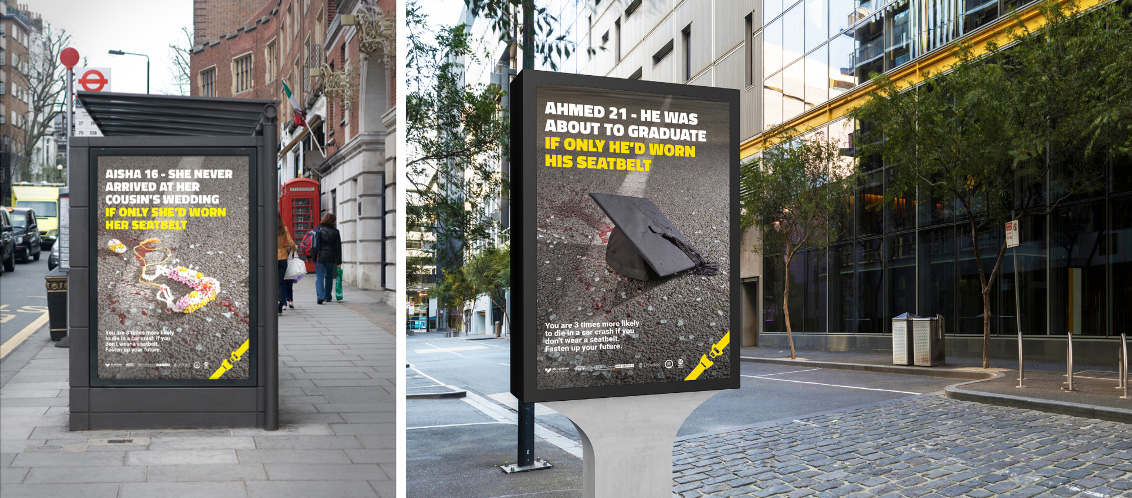
Headline Results
First, we looked at the response from the perspective of all respondents: the tailored campaigns performed significantly better than the comparator campaigns (national campaign, regional campaign and the information-only campaign) on all measures.
We then compared the responses of South Asian viewers to non-South Asian viewers. Here, we found one important distinction. Those who identified as South Asian showed an increase of 35% in the number of emotions generated from viewing the tailored campaigns (combined). Given what we know about emotion as a device to increase attention, engagement, and recall, this is a significant finding.
This tells us two things
The campaigns we had created were highly tailored - but not just to the condition of being South Asian. Working with South Asian young people had in fact allowed us to derive valuable insights into two conditions.
- The condition of being young in relation to risk perception related to seatbelt use: Our behavioural deep dive with young South Asian people had uncovered a number of powerful insights that were relevant to the experience of being young. We have concluded that the lever of anticipated regret has potential to increase seatbelt use amongst young people in general.
- The condition of being South Asian. People of South Asian origin demonstrated significantly higher levels of emotion when viewing a tailored campaign than their non-South Asian peers.
This startling result demonstrates that the insights we uncovered, and the campaigns co-designed with young people from Birmingham have the potency and potential to reduce loss of life amongst this community.
What does the future hold?
Young people from all backgrounds have had limited exposure to seatbelt campaigns. There is an argument to suggest that the insights uncovered in the behavioural deep dive could be used to create a national campaign that would resonate with all young people
However, the deliberate inclusion of cultural tailoring will help to narrow an existing health inequality (passenger casualty rates) that we know exists within South Asian communities in Birmingham but may well apply to other minority groups within the population.
Acknowledgement
This project received the title ‘Highly Commended’ for the CIHT 'Research Initiative of the Year Award' in September 2022.
Watch the video below to learn more about the project and the experiences of young co-designers participating in the project.
This project was funded by The Road Safety Trust.
Knowledge Exchange
We presented this case study at an online 2-hour workshop called ‘What’s really driving road user behaviour?’ (13.07.22) to share the results and learning from this project. View the recording below.

“I think our community gets stereotyped or misunderstood a lot of the time and by taking the time to carry out this research, it helps avoid these misunderstandings and produce a more effective ad”
“I am glad to have helped on the project and even more proud that it is maximising it’s impact. Thank you for the opportunity to be part of a massive initiative and cause, I hope this isn’t the end of my involvement with So-Mo as I am keen for further opportunities to maximise impact and make a real difference”
“Their innovation and creativity combined with well-established behaviour change and psychological approaches have delivered on the projects and changed how we think and work as a team with impact beyond immediate project commissions”
